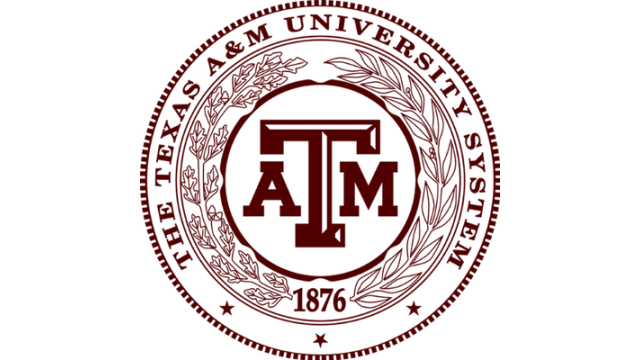
Texas A&M university and the A&M system are losing a top executive to the governor’s office. The governor’s new director of the Texas Space Commission is Norman Garza, Jr. Garza spent the last ten years with the system and the flagship campus as their contact with state and federal government agencies. Garza was involved during the last legislative session in creating the space commission agency and a $200 million dollar space institute that will be operated by A&M next to the Johnson Space Center.
The A&M system has announced the selection of the first director of the Texas A&M semiconductor institute. A system news release says the appointment of Dr. E. Steve Putna “marks a milestone in the System’s commitment to advancing semiconductor research and development, workforce training and industry collaboration.” The system’s board of regents approved creating the institute in May 2023. That was followed by the governor signing the Texas CHIPS Act that includes the system receiving $226.4 million dollars for semiconductor research, development, and manufacturing in Texas.
News release from the governor’s office regarding the Texas Space Commission’s new director:
Governor Greg Abbott today announced that Norman Roy Garza, Jr. has been named as the Executive Director of the Texas Space Commission. The Texas Space Commission was created to further cement Texas’ position as a national leader in the space industry and secure its future in space exploration and development for the next generation of Texans.
“The Texas Space Commission was created last year to ensure that our great state remains the national leader in space exploration and innovation for decades to come,” said Governor Abbott. “Norman Garza will help lead that mission as the Commission’s first Executive Director. From serving in several leadership roles with the Texas A&M University System and for the State of Texas, Norman brings a wealth of experience that will serve him well as he spearheads our state’s Space Commission. I look forward to working with Norman and the entire Texas Space Commission to secure the future of Texas’ robust space industry.”
“On behalf of my fellow directors, I’m pleased that Norman accepted the Executive Director position,” said Chair of the Texas Space Commission Board of Directors Gwen Griffin. “His ideas and expertise will be of immediate benefit as we work on our first strategic plan and to hire key staff. I’d like to thank the directors on the hiring subcommittee for thoroughly and expeditiously conducting the search.”
“I am honored and humbled to be selected by the Texas Space Commission Board of Directors,” said Mr. Garza. “Governor Abbott, Chairman Bonnen, and the Texas Legislature have provided clear objectives for us to tackle in a short amount of time. Through strategic efforts by the Texas Space Commission, as well as critical input from members of our Texas Aerospace Research and Space Economy Consortium, Texas will achieve innovative technological advancements that can significantly support many sectors of the commercial space exploration industry. In turn, the Lone Star State will continue to make substantial gains in economic development. Today, just like in 1964 when NASA opened the Johnson Space Center, Texans everywhere will be excited about what we are doing to help propel the Texas space economy into the future.”
Norman Roy Garza, Jr. joined the Texas A&M University System in 2014. Since then, he has served as the Assistant Vice Chancellor of Government Relations and External Affairs for three state agencies funded by the state legislature, Engineering Experiment Station and Engineering Extension Service and Transportation Institute, as well as the Vice President of Government Relations for the flagship campus, Texas A&M University in College Station. While at Texas A&M, Garza supported major initiatives such as partnering with U.S. Army Futures Command to create the Bush Combat Development Complex; obtaining management contracts from National Nuclear Security Administration for Los Alamos National Laboratory and the Pantex Plant; and establishing the Texas Semiconductor Institute and the Texas Space Institute, a $200 million Texas A&M facility to be constructed next to NASA’s Johnson Space Center. In his role, Garza worked closely with the Texas Legislature on the development and passage of HB 3447 in the 88th Regular Session which established the Texas Space Commission and worked on the appropriation for the Texas Space Institute. Previously, Garza was an Associate Legislative Director at Texas Farm Bureau and also worked for a state senator at the Texas Capitol. He earned a bachelor’s degree in political science from St. Edward’s University. He also studied at the Universidad de Belgrano in Buenos Aires, Argentina and earned a certificate through the Governor’s Executive Development Program at The University of Texas at Austin.
Earlier this year, Governor Abbott launched the Texas Space Commission and announced the inaugural members of the Texas Space Commission Board of Directors and the Texas Aerospace Research and Space Economy Consortium Executive Committee at NASA’s Johnson Space Center. The Commission works to strengthen Texas’ proven leadership in civil, commercial, and military aerospace activity by promoting innovation in the fields of space exploration and commercial aerospace opportunities, including the integration of space, aeronautics, and aviation industries into the Texas economy. The Commission is governed by a nine-member board of directors, who will also administer the legislatively created Space Exploration and Aeronautics Research Fund to provide grants to eligible entities.
News release from the Texas A&M system regarding the appointment of the first director of the A&M semiconductor institute:
The Texas A&M University System announced Thursday the appointment of Dr. E. Steve Putna as the inaugural director of the Texas A&M Semiconductor Institute to begin July 1, 2024. This appointment marks a milestone in the System’s commitment to advancing semiconductor research and development, workforce training and industry collaboration.
“Dr. Putna has the experience and ambition needed to lead the Texas A&M Semiconductor Institute,” said John Sharp, chancellor of The Texas A&M University System. “What we are creating here will help bolster the semiconductor industry in the U.S. for the next century.”
The Texas A&M Semiconductor Institute was created in response to federal and state-level CHIPS and Science Act legislation. In May 2023, the System’s Board of Regents approved the establishment of the Institute. By June 2023, Gov. Abbott signed the Texas CHIPS Act that appropriated $1.4 billion for semiconductor research, development and manufacturing in Texas, with $226.4 million directly allocated to the Texas A&M System.
Dr. Putna brings to Texas A&M more than 25 years of extensive experience in the semiconductor industry, particularly in manufacturing and supply chain management at Intel Corporation. His career encompasses a wide range of technical and financial responsibilities. He has experience leading large teams and driving innovative research projects from concept to implementation.
“Following a 25-year career in semiconductor R&D and supply chain at Intel Corporation and at Semiconductor Research Corporation, I’m thrilled to have the opportunity to serve as the inaugural director of the Texas A&M Semiconductor Institute,” Dr. Putna said. “My vision for the Institute is one of boundless possibility leveraging positive reinforcement amongst Texas, the US government, and A&M’s outstanding track record of research, development, innovation, and workforce development. Intense focus on maintaining and growing public-private partnerships as well as fostering consortia alliances will drive the Institute to a position of global prominence whilst simultaneously realizing the goal of strengthening our domestic semiconductor ecosystem.”
The Texas A&M Semiconductor Institute was created to promote the growth and competitiveness of the semiconductor industry. The Institute will serve as a multidisciplinary research organization focusing on advancing semiconductor manufacturing technology and promoting workforce development. It will be a hub for collaboration among academic researchers, industry leaders, and government partners to develop innovative solutions to complex semiconductor manufacturing challenges.
Objectives of the Institute include:
• Conducting cutting-edge research and development in semiconductor manufacturing.
• Collaborating with industry partners to transfer technology from research to commercialization.
• Securing federal and state funding to support semiconductor research and workforce development.
• Offering education and training programs to develop the next generation of the semiconductor workforce.
• Establishing a secure semiconductor fabrication capability to support national defense needs.
• Addressing the critical need for U.S. leadership and security in semiconductor manufacturing.
Dr. Putna’s strategic vision for the Institute includes reviewing and refining the existing strategy and operating plans, leveraging his extensive network to build relationships with key industry and government stakeholders and driving innovation through public-private partnerships. His leadership will be instrumental in shaping the future of semiconductor research and development at Texas A&M and beyond.
Dr. Putna holds a Ph.D. in Chemical Engineering from the University of Pennsylvania and a B.S. in Chemical Engineering from the University of Texas at Austin.
